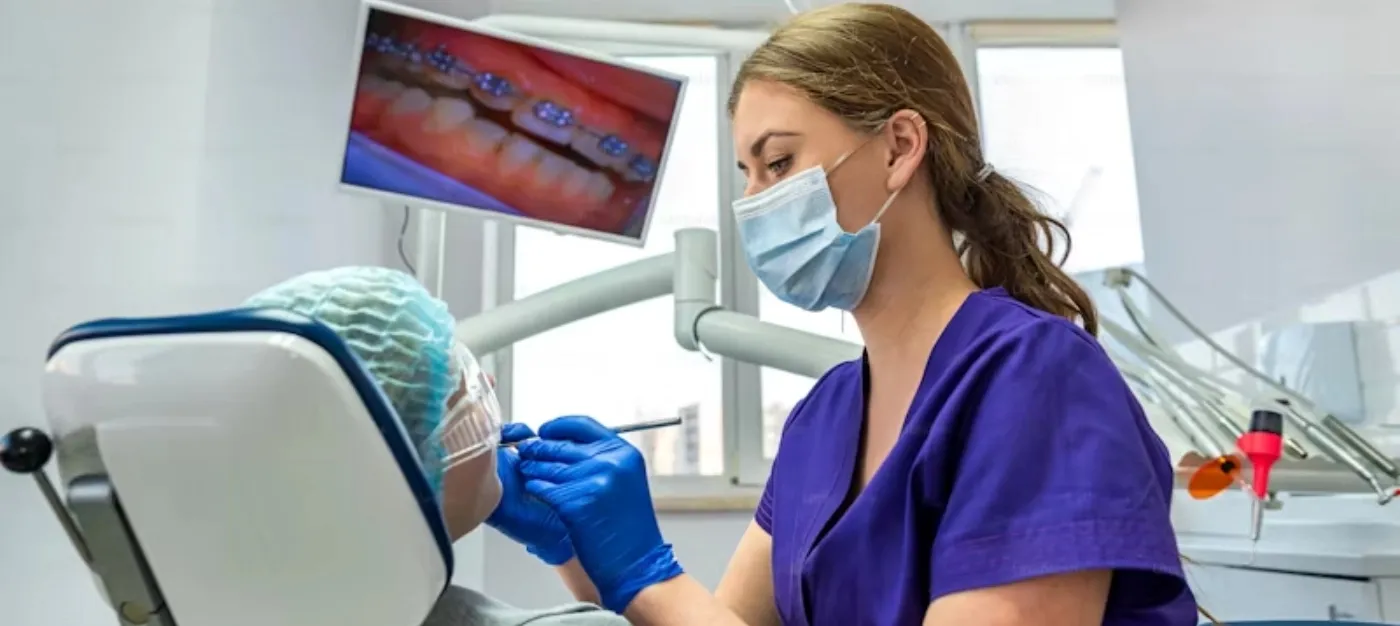Gone are the days when you had to hide your smile due to stains, gaps, chips, or misaligned teeth. With veneers, you can address the defects in your teeth, paving the way for a more confident, beautiful smile.
Home » Our Services » Dental Veneers
Gone are the days when you had to hide your smile due to stains, gaps, chips, or misaligned teeth. With veneers, you can address the defects in your teeth, paving the way for a more confident, beautiful smile.

seem a natural and effective option for individuals who wish to make minimal changes to the appearance and feel of their smile.
Veneers are custom-made shells, usually crafted from porcelain or composite resin, bonded to the front surface of teeth. They conceal oral imperfections and improve the appearance of teeth by altering their size, shape, color, or length, thus enhancing smiles.
Veneer dentistryaddresses issues like discoloration, chipping, gaps, or misalignment, providing a natural-looking solution for a brighter, more uniform smile.
When it comes to dental veneers, exploring the available options is essential to ensure the best outcome for your smile. We are here to assist you in making informed decisions tailored to your unique needs.
There are primarily two types of dentistry veneers:
a. Porcelain Veneers:These dental veneers are made with high-quality porcelain. They not only offer durability but also ensure a natural appearance, as they are custom-made to match your natural teeth color, shape, and size, thus seamlessly integrating your smile. Porcelain veneers are also known for their stain resistance and long-lasting results with proper care.
b. Composite Veneers:These veneers are made from composite resin. Our veneer dentist directly applies them to the teeth and shapes them to enhance their appearance. While composite veneers may be more affordable, they are less stain-resistant than porcelain and require frequent maintenance and replacement.
During your consultation with our dentists, we will evaluate your dental health, discuss your aesthetic goals, and recommend the most suitable type of veneer. At Keller Dental, our priority is your comfort and satisfaction.
Below are common issues that necessitate requirements for veneers:
Discoloration:Veneers effectively conceal stubborn stains and discoloration, offering a uniformly bright smile.
Chips and Cracks:Minor dental flaws, such as chips and cracks, can be concealed under emergency veneers, enhancing smile symmetry.
Uneven Teeth:Veneers provide a solution for teeth with irregular sizes or shapes, creating a more harmonious smile.
Gaps between Teeth:Small gaps or spaces between teeth can be minimized with dental veneer teeth, achieving a more balanced smile.
Misalignment:Veneers offer a non-invasive approach to improving the appearance of mildly crooked teeth without the need for orthodontic treatment.
Worn Enamel:Teeth with worn enamel due to grinding or erosion can be strengthened and aesthetically restored with soft veneers.
Minor Tooth Crowding:Veneers can create the illusion of properly aligned teeth, addressing minor tooth crowding and enhancing smile aesthetics.
In some cases, it may also be used for veneers on root canal teeth.
But how do you find the best dentist for veneers? You can contact us from our website or search “dentist near me, Keller” online to locate our clinic.
Our clinic’s dental veneer process begins with an initial consultation with one of our skilled dentists.
During this visit, we will evaluate your dental health and discuss your objectives and desires regarding the procedure. They will thoroughly examine your teeth to ascertain if you qualify for veneers, elucidate the procedure comprehensively, and address any queries or apprehensions you may have.
Once you decide to proceed, the next step is to prepare your teeth for the veneers. Our dentist in Keller, TX typically removes minimal enamel from your tooth surface to ensure proper veneer fit.
Following tooth preparation, our dentists will take the impressions of your teeth to fabricate custom-made veneers that mimic your natural teeth’s size, shape, and color. While our technicians craft permanent veneers in our dental laboratory, they may fit temporary veneers to safeguard your teeth.
Once the permanent veneers are ready, you return to the clinic for placement. The dentist meticulously attaches the veneers to your teeth using a specialized adhesive, ensuring proper alignment and aesthetic appeal. Dental veneers can give you a radiant and enduring smile with diligent care and maintenance.
Like every other dental prosthetic, you can also find the pros and cons of veneers. Let’s look at its key benefits:
Enhanced Appearance:Veneers can drastically improve the aesthetics of teeth by changing their color, shape, size, and length. They’re an effective solution for discoloration, chips, cracks, and gaps between teeth.
Stain Resistance:Porcelain veneers are highly resistant to stains from everyday food, drinks, and tobacco, ensuring a long-lasting, bright smile.
Minimal Tooth Alteration:Unlike other dental procedures, veneers require minimal alteration to the natural tooth structure. Dentists usually remove only a small amount of enamel, preserving the tooth’s integrity.
Longevity:With proper care, veneers can last for many years. Regular oral hygiene practices and dental check-ups are essential for maintaining their durability.
Strengthens Teeth:Besides cosmetic benefits, veneers can strengthen weak or damaged teeth by protecting against further damage or decay.
Boosts Confidence:By enhancing the appearance of teeth, veneers can significantly boost self-confidence and improve self-esteem. Patients feel more comfortable smiling and speaking in social and professional settings, leading to a better quality of life.
Caring for and maintaining your veneer is straightforward and effortless! Once you’re accustomed to the oral prosthetic, ensure you take the time to clean it at regular intervals.
Remember, clean veneers are a sign of good oral health. All the best!

Lorem ipsum dolor sit amet consectetur. Fames viverra lectus et turpis vestibulum. In urna amet orci viverra risus consequat neque vitae. Proin risus penatibus viverra fermentum. Morbi scelerisque et mi pharetra volutpat facilisi sed commodo. Ipsum erat suspendisse felis ultrices sodales sed adipiscing. Sagittis velit justo nibh nibh malesuada tellus venenatis cras senectus. Suscipit integer quam in viverra. Tempor facilisis ante et venenatis cursus sed tristique tortor.
Lorem ipsum dolor sit amet consectetur. Fames viverra lectus et turpis vestibulum. In urna amet orci viverra risus consequat neque vitae. Proin risus penatibus viverra fermentum. Morbi scelerisque et mi pharetra volutpat facilisi sed commodo. Ipsum erat suspendisse felis ultrices sodales sed adipiscing. Sagittis velit justo nibh nibh malesuada tellus venenatis cras senectus. Suscipit integer quam in viverra. Tempor facilisis ante et venenatis cursus sed tristique tortor.
Lorem ipsum dolor sit amet consectetur. Fames viverra lectus et turpis vestibulum. In urna amet orci viverra risus consequat neque vitae. Proin risus penatibus viverra fermentum. Morbi scelerisque et mi pharetra volutpat facilisi sed commodo. Ipsum erat suspendisse felis ultrices sodales sed adipiscing. Sagittis velit justo nibh nibh malesuada tellus venenatis cras senectus. Suscipit integer quam in viverra. Tempor facilisis ante et venenatis cursus sed tristique tortor.
Lorem ipsum dolor sit amet consectetur. Fames viverra lectus et turpis vestibulum. In urna amet orci viverra risus consequat neque vitae. Proin risus penatibus viverra fermentum. Morbi scelerisque et mi pharetra volutpat facilisi sed commodo. Ipsum erat suspendisse felis ultrices sodales sed adipiscing. Sagittis velit justo nibh nibh malesuada tellus venenatis cras senectus. Suscipit integer quam in viverra. Tempor facilisis ante et venenatis cursus sed tristique tortor.
